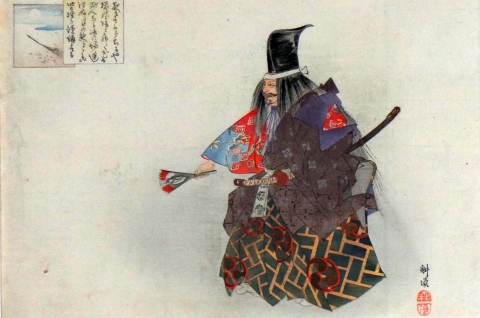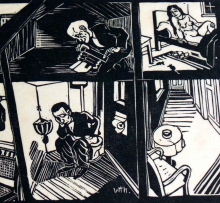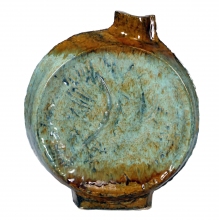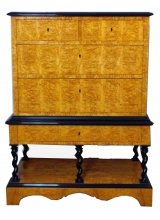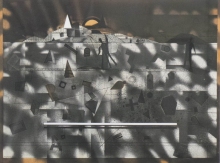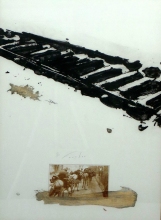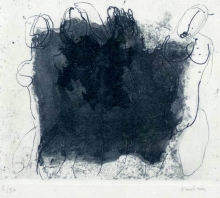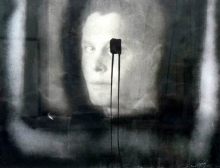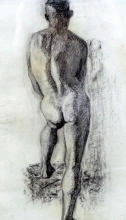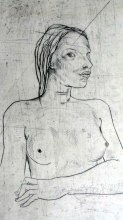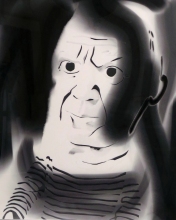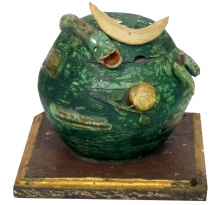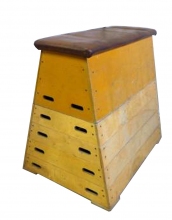Tsukioka Kogyo, "Tumaura" (The Spirit of Sakanone Tamuramara at Kiyomizu Temple), Series: Nogaku Zue (Noh Theater Plays), Dated: September 15, 1897, Publisher: Matsuki Heikihi, (8 1/2 X 12 1/2"). A wonderful example of the stiff, multi-layered splendor of the actor's robes and how he carries his posture based on centuries of tradition..
Tsukioka Kogyo , sometimes called Sakamaki Kōgyo , (April 18, 1869 - February 25, 1927) was a Japanese artist of the Meiji period. He was a student and adopted son of Tsukioka Yoshitoshi, and also studied with Ogata Gekkō. Although Kōgyo sometimes painted other subjects, for most of his career he made pictures of Japanese noh theatre, either as large-scale paintings or colored woodblock prints. Many of the latter were published in series and sold as multi-volume sets. Some sets, such as Nōgaku zue, have been preserved as albums in their original bindings, including accordion-style bindings known as orihon, while other sets such as Nōga taikan, were issued in sewn bindings known as yamato toji. Although most bound sets belong to institutional collections, individual prints by Kōgyo can still be found through dealers specializing in Japanese prints.
Some of the museum collections of Kogyo include:
Walters Art Museum
Art Institute of Chicago
Chandler Williamson Gallery
Los Angeles County Museum of Art
Frick Art & Historical Center
University of Pittsburgh


